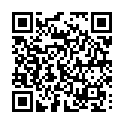Apple device owners spent more than $20 billion in the App Store in 2015. Apple users broke App Store records by spending more than $1.1 billion on apps and in-app purchases this holiday season.
That figure includes money spent during the two week period ending on Jan. 3. New Year’s Day was the biggest day in App Store history, with more than $144 million spent in the 24-hour period.
Philip Schiller, Apple’s senior vice president who now leads the App Store, said that Apple device users spent more than $20 billion in the App Store throughout all of 2015. That’s double the 2013 figure.
Apple is now busy expanding the App Store to new platforms, like the Apple TV. The early crop of Apple TV apps already provide some insight as to how apps behave differently on the TV versus the phone.
http://time.com/4169153/apple-app-store-stats-2015/





